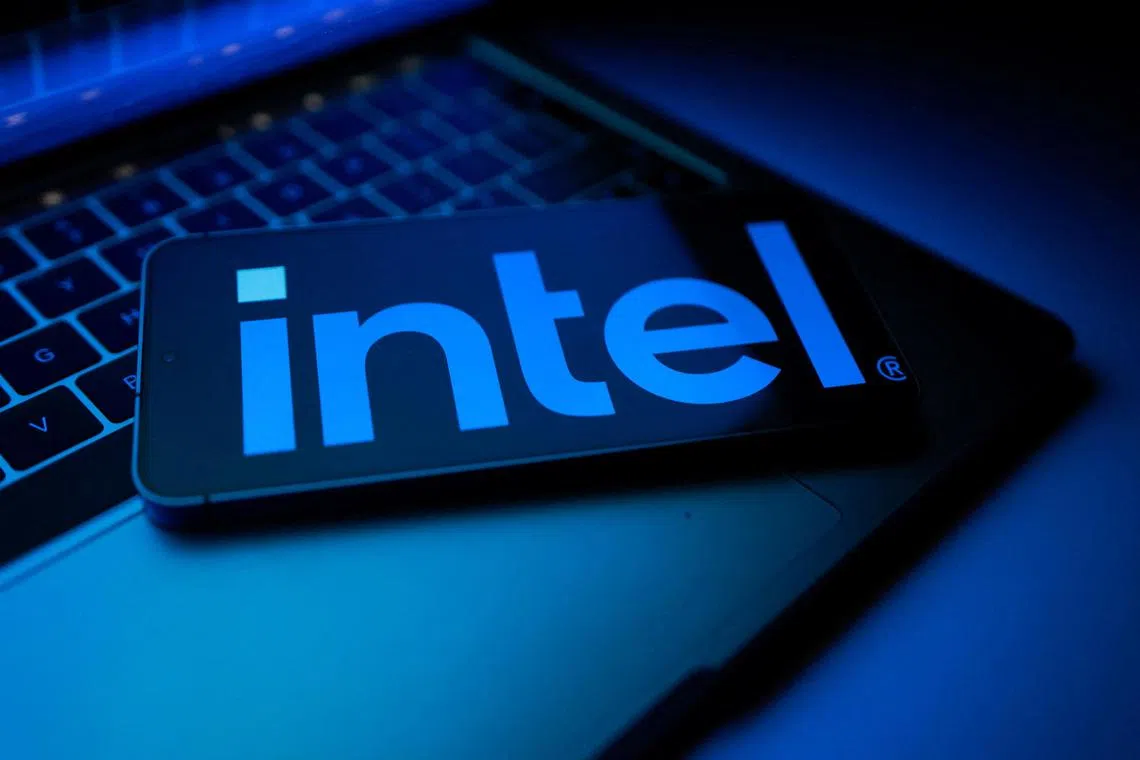Intel says it received US grant; government says it is still working on deal
Sign up now: Get ST's newsletters delivered to your inbox

US President Donald Trump negotiated for a 10 per cent stake in struggling chipmaker Intel last week.
PHOTO: REUTERS
Follow topic:
- Intel received US$5.7 billion on August 27 for a 10% stake in the chipmaker as per an agreement negotiated by US President Donald Trump.
- The agreement includes a 5% warrant if Intel's foundry ownership falls below 51%, which finance chief David Zinsner expects will likely expire worthless.
- Intel seeks a major customer by 2026 for its 14A manufacturing process to sustain its foundry business, aiming for financial discipline and appropriate ROI.
AI generated
NEW YORK - Intel received US$5.7 billion (S$7.3 billion) in cash on the night of Aug 27 as part of the deal US President Donald Trump negotiated for a 10 per cent stake in the struggling chipmaker, finance chief David Zinsner said at an investor conference on Aug 28.
The stake in Intel announced by the US government
As part of the deal, the government negotiated an additional 5 per cent warrant, should Intel cease to own more than 51 per cent of its foundry operation.
“I don’t think there’s a high likelihood that we would take our stake below 50 per cent,” Mr Zinsner said. “So, ultimately, I would expect (the warrant) to expire worthless.”
Also on Aug 28, White House press secretary Karoline Leavitt said the deal between Intel and the US was “still being ironed out by the Department of Commerce”, adding: “The Ts are still being crossed. The Is are still being dotted. These – you know – it’s very much still under discussion.”
Intel declined to comment.
Ms Leavitt said the President proposed the deal, and that the commerce secretary was working on putting it into action.
The California-based chipmaker raised US$2 billion from SoftBank Group in the form of an equity stake earlier in August, and has vowed to slash its staff to 75,000 as part of chief executive Tan Lip-Bu’s effort to turn around the company.
The CEO’s plans have included seeking to find big customers for its manufacturing business and cleave off businesses he does not view as crucial.
Intel has taken steps to separate its contract chip manufacturing arm, or foundry, from its design business. Foundries such as Taiwan Semiconductor Manufacturing Company make chips for design companies such as Nvidia and AMD that do not own manufacturing operations.
Intel has previously said it could take outside investment in the foundry unit, and it has created a separate management board to govern it.
Should Intel take outside investors for the foundry business, Mr Zinsner said, the company was leaning towards taking a strategic investor versus a financial one.
But Intel is “years away from that”. In July, Intel disclosed that the future of its foundry business depended on securing a big customer for its next-generation manufacturing process known as 14A. Failing that, it could get out of the foundry business altogether.
On Aug 28, Mr Zinsner downplayed the potential risk to its foundry. “The lawyers are always looking for areas where we should be elaborating in terms of our risks,” he said.
Intel is focused on landing a big customer in 2026 but is committed to maintaining “financial discipline” while developing the next-generation manufacturing technology and technique, Mr Zinsner said. The investment in 14A for only Intel’s internal use is too great to provide an “appropriate” return on investment for shareholders, he said.
Intel shares were down 0.6 per cent at US$24.69 on the afternoon of Aug 28. REUTERS

